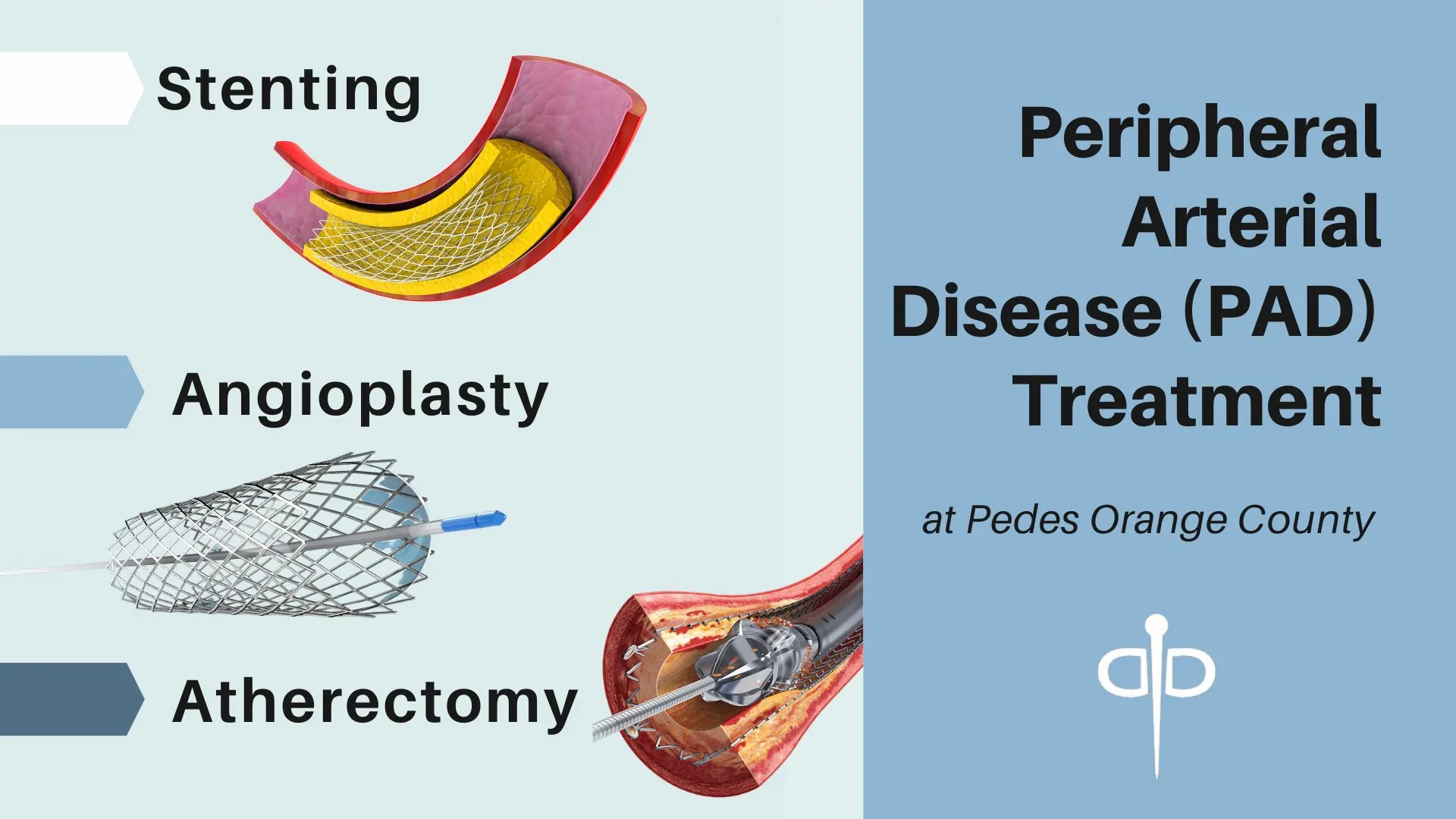PAD Treatment: Bypass Grafting vs. Angiogram with Intervention

PAD Treatments
Are you suffering from pain in your legs while you are walking? If so, you may have peripheral arterial disease, or PAD. One in every 20 Americans over the age of 50 are affected by PAD- making this condition extremely common, but treatable. Treatments for peripheral arterial disease can help to alleviate painful symptoms. Patients may experience leg pain, leg cramps, or foot ulcers. PAD treatment includes Bypass Grafting and an angiogram with intervention.
What is peripheral arterial disease?
Peripheral arterial disease develops when there is excessive plaque buildup on the arterial walls, causing the arteries to narrow. Arteries deliver oxygen-rich blood from the heart to other parts of the body. When plaque builds up, it restricts the flow of blood, oxygen, and glucose. This obstruction causes pain in the leg as the muscles and tissues are starved of oxygen and other essential nutrients.
Fatty plaque accumulation develops through a process called atherosclerosis, which is the primary cause of peripheral arterial disease. Certain factors- such as smoking, old age, a history of heart disease, high blood pressure, diabetes, and a sedentary lifestyle- may put people at an increased risk for developing PAD. Additionally, individuals suffering from peripheral arterial disease are at a higher risk of coronary artery disease, stroke, or heart attack. If left untreated, PAD can lead to wounds, gangrene, and limb amputation.
How to treat peripheral arterial disease?
There are a few different treatment options available to combat the effects of peripheral arterial disease. At Pedes Orange County, our Vascular Specialists use minimally invasive methods to treat peripheral arterial disease. After an initial ultrasound and consultation, one of our physicians can recommend a treatment plan that would be most beneficial for you.
Surgical Treatment for PAD: Bypass Grafting
A Vascular Surgeon performs a bypass graft to treat peripheral arterial disease. During a bypass graft surgery, the Vascular Surgeon creates a biologically compatible graft to replace damaged blood vessels and restore blood flow in the legs, thus bypassing any blocked arteries. They can make this graft from part of one of your veins or from a man-made synthetic tube. Your Vascular Surgeon closes the incision site using sutures or staples. This procedure is completed in a hospital with general anesthesia.
What to expect from bypass grafting as a treatment option for PAD?
Bypass grafting is considered major surgery. The hospital staff closely monitors you after your surgery. They will ensure blood is flowing optimally through your legs and your vital signs are stable. The recovery process for bypass grafting is typically 3-10 days because of the severity of the procedure. After you are able to walk on your own, you will be released from the hospital and sent home. Once at home, it will be important for you to follow all instructions provided by your doctor, such as medication regimen.
What risks are associated with bypass grafting as a treatment option for PAD?
Studies have shown that 95% of patients who undergo bypass grafting will not experience complications. However, as is common with any surgical procedure, there are risks to make yourself aware of.
- Heart Attack
- Difficulty Breathing
- Heavy Bleeding
- Wound Infection
- Death
Minimally Invasive Treatment for PAD: Angiogram with Intervention
Diagnosing PAD early on is critical because it may help patients to avoid a major surgical procedure such as bypass grafting. If identified early enough, a Vascular Specialist can treat peripheral arterial disease through an angiogram with intervention. A surgeon can complete this procedure using three different types of techniques: a stent, an angioplasty, and an atherectomy.
At Pedes Orange County, we offer the following, minimally invasive methods of treatment to treat and combat the effects of peripheral arterial disease.
Stenting:
Years of plaque buildup can cause damage to the walls of the artery. Stents are wiry, mesh tubes that can be placed within the artery. They act as an internal support system for the damaged walls. Stents can also be coated with medicines to prevent future plaque buildup.
Angioplasty:
During this procedure, a surgeon inserts a small catheter into the artery and, as a result, restores blood flow. Once in the artery, a Vascular Specialist inflates a small balloon at the tip of the catheter. The balloon pushes the plaque against the artery wall and creates pressure. The pressure created by the balloon widens the narrowed arteries, allowing for optimal blood flow throughout the leg.
Atherectomy:
This is a minimally invasive procedure that uses a catheter (a small, thin tube) to gently remove plaque stuck in your arteries. While under local anesthesia, a surgeon makes a small incision so the catheter can be easily inserted. During the procedure, the catheter gently removes and sucks the plaque out from the small chamber at its tip.
What are the benefits of an angiogram with intervention as a treatment option for PAD?
There are many benefits to a minimally invasive procedure. For example, in comparison to a surgical procedure, the recovery time is significantly shorter. Other benefits to a minimally invasive procedure such as an angiogram with intervention may include:
- Major complications are extremely uncommon.
- A Vascular Specialist uses local anesthesia instead of general anesthesia. This means patients are awake, but feel no pain during the procedure.
- A Vascular Specialist performs an angiogram with intervention on an outpatient basis, meaning patients are released after the procedure and go home that same day.
If left untreated, peripheral arterial disease can lead to serious, and potentially life-threatening complications. If you’d like to learn more about PAD, schedule a consultation with one of our Vascular Specialists today!














